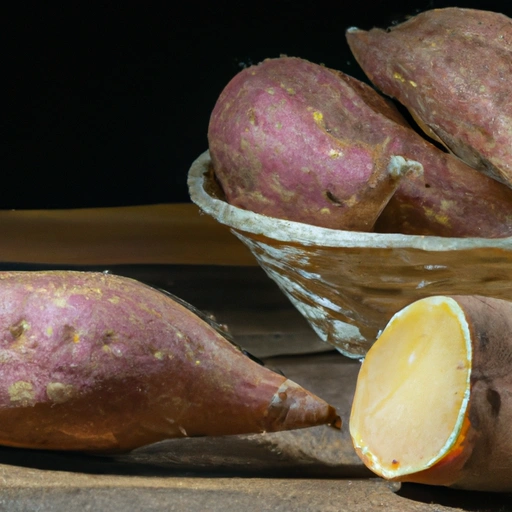Boniato
Description

Boniato, also known as the Cuban sweet potato, is a root vegetable popular in Caribbean, Latin American, and Asian cuisines. It has a dry, starchy texture and is less sweet than its orange-fleshed counterparts. The skin of boniato is typically brown to light rose in color, while the flesh ranges from white to cream. It is an incredibly versatile ingredient that can be incorporated into both savory and sweet dishes.
Common uses
Commonly, boniato is used as a substitute for potatoes or sweet potatoes. It can be roasted, mashed, fried, or boiled, making it a staple in many traditional dishes. Boniato is also often used in the preparation of soups, stews, and desserts such as pies and puddings.
Nutritional value
Calories
One medium boniato (approximately 5 inches in length, weighing around 200g or 7 ounces) contains about 180-200 calories.
Protein
Boniato provides about 2 grams of protein per medium-sized root.
Fat
This root vegetable is low in fat, with less than 0.3 grams per medium boniato.
Carbohydrates
Boniato is a rich source of carbohydrates, offering about 45 grams in a medium-sized root.
Vitamins
While not as rich in beta-carotene as orange-fleshed sweet potatoes, boniato is an excellent source of vitamin C and also provides B vitamins including thiamin, riboflavin, and niacin.
Minerals
Boniato contains essential minerals such as potassium, with a medium root providing around 600-700 mg. It also supplies magnesium, phosphorus, and calcium.
Health benefits
Boniato is valued for its high fiber content, which promotes digestive health. Its low glycemic index makes it a suitable choice for those managing blood sugar levels. The nutrients found in boniato support immune function, bone health, and energy production.
Potential risks
For individuals with carbohydrate-sensitive conditions, such as diabetes, moderation in consumption of boniato is advised due to its high carbohydrate content. As with any food, there is a potential for allergic reactions, though this is relatively rare with boniato.
Common recipes
Boniato is featured in a variety of recipes, from Caribbean boniato fritters to Asian sweet potato cakes. It can also be found in soups, such as the Filipino 'Sinigang' where it acts as a thickening agent.
Cooking methods
Roasting, boiling, mashing, and frying are all common cooking methods for boniato. It can also be baked whole in an oven preheated to 375°F (190°C) or cooked in a microwave for a quicker option.
Pairing with other ingredients
Boniato pairs well with spices such as cinnamon, nutmeg, and allspice, enhancing its naturally sweet flavor. It also complements savory ingredients like garlic, rosemary, and thyme when used in more savory applications.
Summary
Boniato is a nutritious and adaptable root vegetable with a rich history of use in various global cuisines. Its versatility in cooking methods and ability to pair with a wide range of flavors make it a valuable ingredient for any kitchen. Whether you're looking to create traditional dishes or experiment with new recipes, boniato offers a world of culinary possibilities.